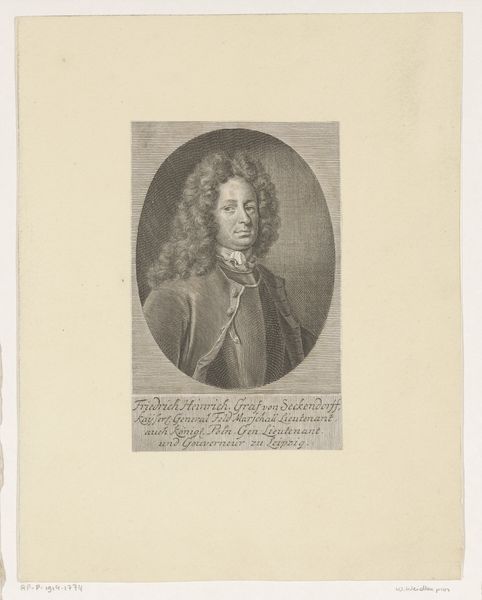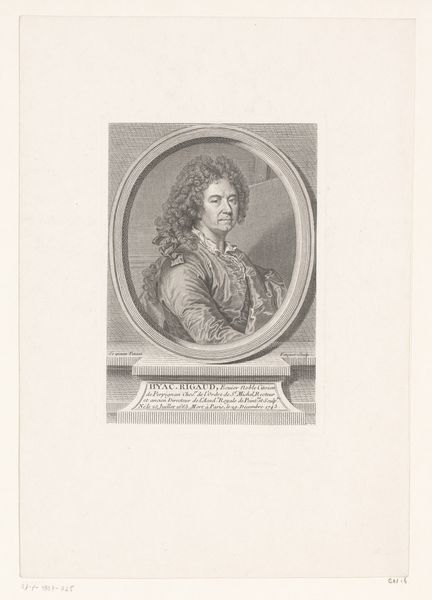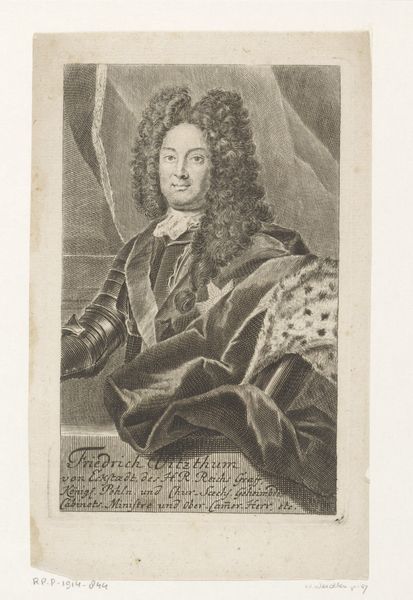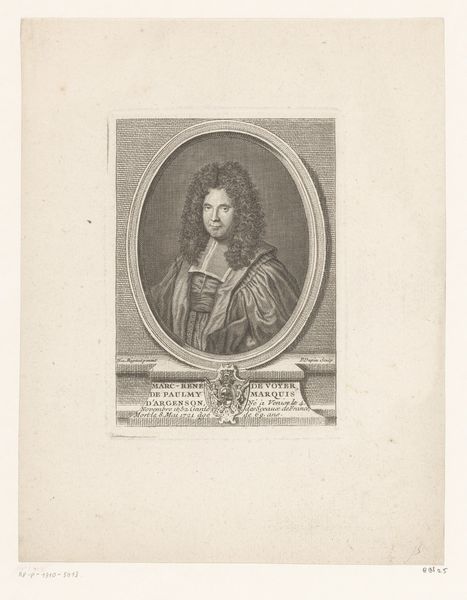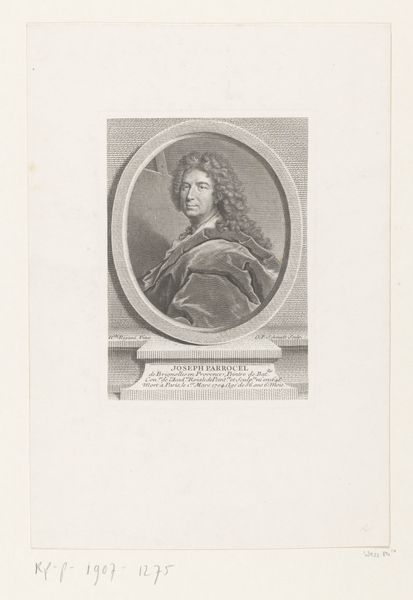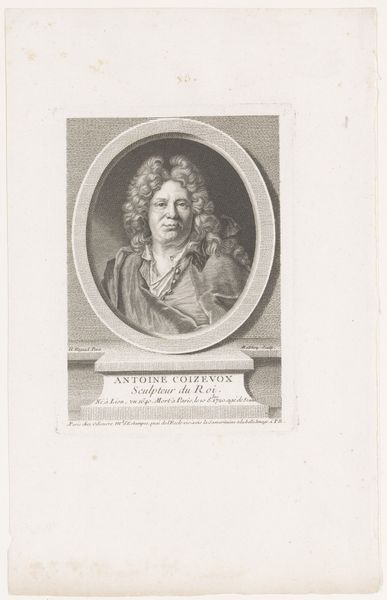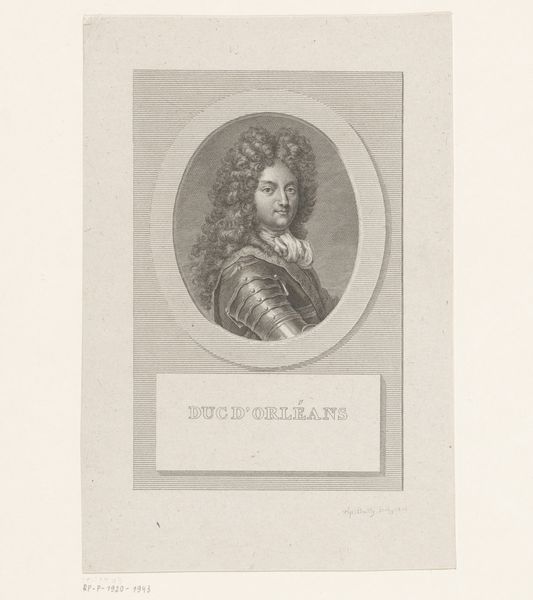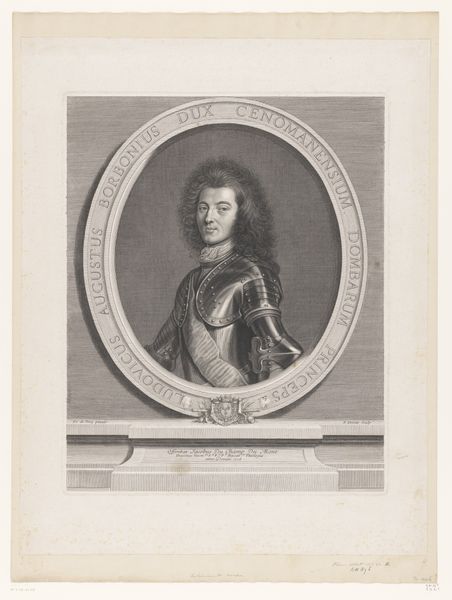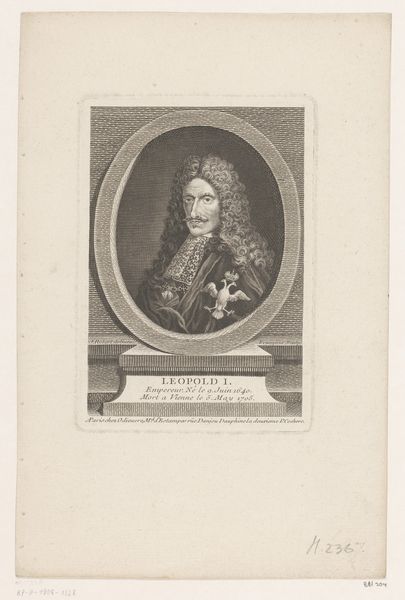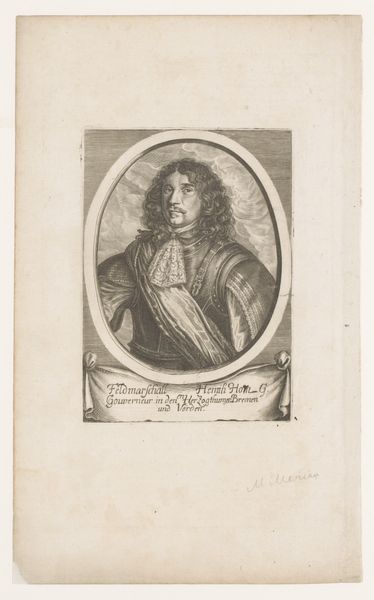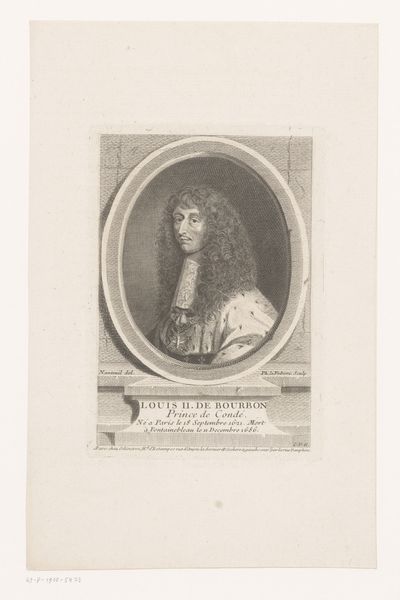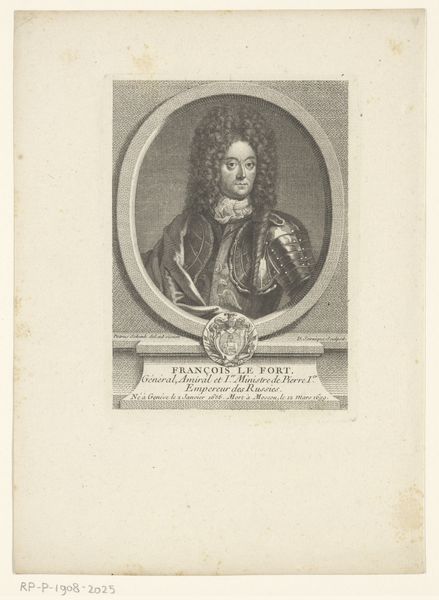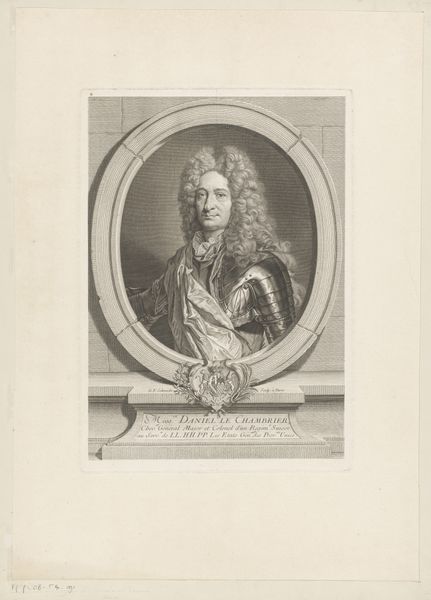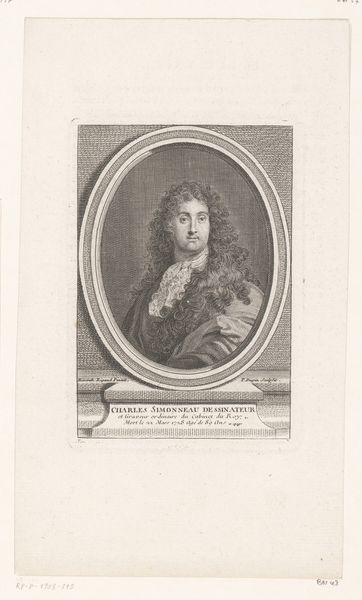
Dimensions: height 144 mm, width 92 mm
Copyright: Rijks Museum: Open Domain
This is a print of Claude Louis Hector, Duc de Villars, made by Antoine de Marcenay de Ghuy in the 18th century. It captures the Duke in his armour, a symbol of his military achievements and noble status. Now, consider the social context of 18th-century France. The monarchy and aristocracy exerted immense control, and images like this played a crucial role in reinforcing their power. Portraits were not merely likenesses; they were carefully constructed displays of status and authority. The Duke's elaborate wig, expensive armour, and the very act of commissioning this print, all speak to his position within a rigid social hierarchy. To truly understand this work, we need to delve into the history of the French aristocracy, the role of the military in maintaining power, and the art market that catered to the elite. By examining historical documents, letters, and other visual materials, we can gain a richer understanding of the social and institutional forces that shaped this image. In doing so, art becomes a powerful tool for understanding the past.
Comments
No comments
Be the first to comment and join the conversation on the ultimate creative platform.
